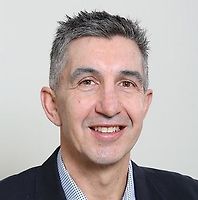Central Auckland > Private Hospitals & Specialists >
Kākāriki Hospital - Paediatric General Surgery
Private Surgical Service, Paediatrics
Description
Kākāriki Hospital is an elective surgical hospital in Greenlane, Auckland that provides a substantial range of surgical procedures for both adults and children.
Paediatric surgery is the diagnosis and treatment of children (usually up to 15 years of age) who may require surgery. This may include disorders of the alimentary tract which is the route food passes from the mouth to anus during digestion, urological procedures (kidneys, bladder, urethra and other associated structures), and correction of congenital abnormalities.
Click here for information about your stay, including what to bring, admission and discharge processes and care when you get home.
Consultants
-

Dr Stephen Evans
Paediatric Surgeon
-

Dr Phil Morreau
Paediatric Surgeon
Ages
Child / Tamariki
Fees and Charges Categorisation
Fees apply
Fees and Charges Description
Click on the link to find information about payment options
Languages Spoken
English
Procedures / Treatments
Umbilical Hernia An incision (cut) is made underneath the navel (tummy button) and the hernia (part of the intestine that is bulging through the abdominal wall) is pushed back into the abdominal cavity. The weakness in the abdominal wall is repaired. Inguinal Hernia An abdominal incision is made and the hernia is pushed back into position. The weakness in the abdominal wall is repaired. Herniotomy: an incision is made in a skin fold in the groin and the hernia sac is cut out.
Umbilical Hernia An incision (cut) is made underneath the navel (tummy button) and the hernia (part of the intestine that is bulging through the abdominal wall) is pushed back into the abdominal cavity. The weakness in the abdominal wall is repaired. Inguinal Hernia An abdominal incision is made and the hernia is pushed back into position. The weakness in the abdominal wall is repaired. Herniotomy: an incision is made in a skin fold in the groin and the hernia sac is cut out.
A small incision (cut) is made in the groin on the side of the undescended testicle and the testicle pulled down into the scrotum. Sometimes a small cut will need to be made in the scrotum as well.
A small incision (cut) is made in the groin on the side of the undescended testicle and the testicle pulled down into the scrotum. Sometimes a small cut will need to be made in the scrotum as well.
All lymph nodes (bean-shaped glands that filter harmful agents picked up by the lymphatic system) from the collar bone to the jaw and from the front of the neck to the back are removed, along with the sternocleidomastoid muscle (moves the head from side to side), the spinal accessory nerve (involved in speech, swallowing and some head movements), the submandibular gland (one of the salivary glands) and the internal jugular vein.
All lymph nodes (bean-shaped glands that filter harmful agents picked up by the lymphatic system) from the collar bone to the jaw and from the front of the neck to the back are removed, along with the sternocleidomastoid muscle (moves the head from side to side), the spinal accessory nerve (involved in speech, swallowing and some head movements), the submandibular gland (one of the salivary glands) and the internal jugular vein.
All lymph nodes (bean-shaped glands that filter harmful agents picked up by the lymphatic system) from the collar bone to the jaw and from the front of the neck to the back are removed.
All lymph nodes (bean-shaped glands that filter harmful agents picked up by the lymphatic system) from the collar bone to the jaw and from the front of the neck to the back are removed.
A long, narrow tube with a tiny camera attached (sigmoidoscope) is inserted into the anus and moved through the lower large intestine (bowel). This allows the surgeon a view of the lining of the lower large intestine (sigmoid colon). If necessary, a biopsy (small piece of tissue) may be taken for examination in the laboratory.
A long, narrow tube with a tiny camera attached (sigmoidoscope) is inserted into the anus and moved through the lower large intestine (bowel). This allows the surgeon a view of the lining of the lower large intestine (sigmoid colon). If necessary, a biopsy (small piece of tissue) may be taken for examination in the laboratory.
A fold of tissue (frenum) that attaches to the cheek, lips and/or tongue is surgically removed.
A fold of tissue (frenum) that attaches to the cheek, lips and/or tongue is surgically removed.
Laparoscopic: several small incisions (cuts) are made in the lower right abdomen and a narrow tube with a tiny camera attached (laparoscope) in inserted. This allows the surgeon a view of the appendix and, by inserting small surgical instruments through the other cuts, the appendix can be removed.
Laparoscopic: several small incisions (cuts) are made in the lower right abdomen and a narrow tube with a tiny camera attached (laparoscope) in inserted. This allows the surgeon a view of the appendix and, by inserting small surgical instruments through the other cuts, the appendix can be removed.
The foreskin is pulled away from the body of the penis and cut off, exposing the underlying head of the penis (glans). Stitches may be required to keep the remaining edges of the foreskin in place.
The foreskin is pulled away from the body of the penis and cut off, exposing the underlying head of the penis (glans). Stitches may be required to keep the remaining edges of the foreskin in place.
Shave Biopsy: the top layers of skin in the area being investigated are shaved off with a scalpel (surgical knife) for investigation under a microscope. Punch Biopsy: a small cylindrical core of tissue is taken from the area being investigated for examination under a microscope. Excision Biopsy: all of the lesion or area being investigated is cut out with a scalpel for examination under a microscope. Incision Biopsy: part of the lesion is cut out with a scalpel for examination under a microscope.
Shave Biopsy: the top layers of skin in the area being investigated are shaved off with a scalpel (surgical knife) for investigation under a microscope. Punch Biopsy: a small cylindrical core of tissue is taken from the area being investigated for examination under a microscope. Excision Biopsy: all of the lesion or area being investigated is cut out with a scalpel for examination under a microscope. Incision Biopsy: part of the lesion is cut out with a scalpel for examination under a microscope.
Skin lesions such as cysts and tumours are removed by cutting around and under them with a scalpel.
Skin lesions such as cysts and tumours are removed by cutting around and under them with a scalpel.
A minor surgical procedure is performed to widen the urinary meatus or opening (where the urine exits the body).
A minor surgical procedure is performed to widen the urinary meatus or opening (where the urine exits the body).
A small cut is made in the scrotum and the fluid is drained from the hydrocoele sac (a fluid-filled mass that forms in the scrotum). The sac may either be removed or is folded back behind the testicle.
A small cut is made in the scrotum and the fluid is drained from the hydrocoele sac (a fluid-filled mass that forms in the scrotum). The sac may either be removed or is folded back behind the testicle.
A small cut is made in the scrotum, the cord supplying blood to the testicle is untwisted and both testes are sutured (stitched) to the scrotum to prevent another torsion.
A small cut is made in the scrotum, the cord supplying blood to the testicle is untwisted and both testes are sutured (stitched) to the scrotum to prevent another torsion.
Disability Assistance
Wheelchair access, Wheelchair accessible toilet, Mobility parking space
Visiting Hours
Visiting hours are between 10.00am and 8.00pm.
Travel Directions
From the car park, please take the elevator to level 2 and follow the signs to the reception.
Public Transport
The Auckland Transport website is a good resource to plan your public transport options.
Parking
There is plenty of parking underneath the hospital, accessed from Marewa Road between the hospital and shops.
Pharmacy
Find your nearest pharmacy here
Website
Contact Details
Kākāriki Hospital
Central Auckland
-
Phone
(09) 892 2901
Email
Website
9-15 Marewa Road
Greenlane
Auckland
Auckland 1040
Street Address
9-15 Marewa Road
Greenlane
Auckland
Auckland 1040
Postal Address
9-15 Marewa Road
Greenlane
Auckland 1051
Was this page helpful?
This page was last updated at 12:50PM on March 28, 2025. This information is reviewed and edited by Kākāriki Hospital - Paediatric General Surgery.

